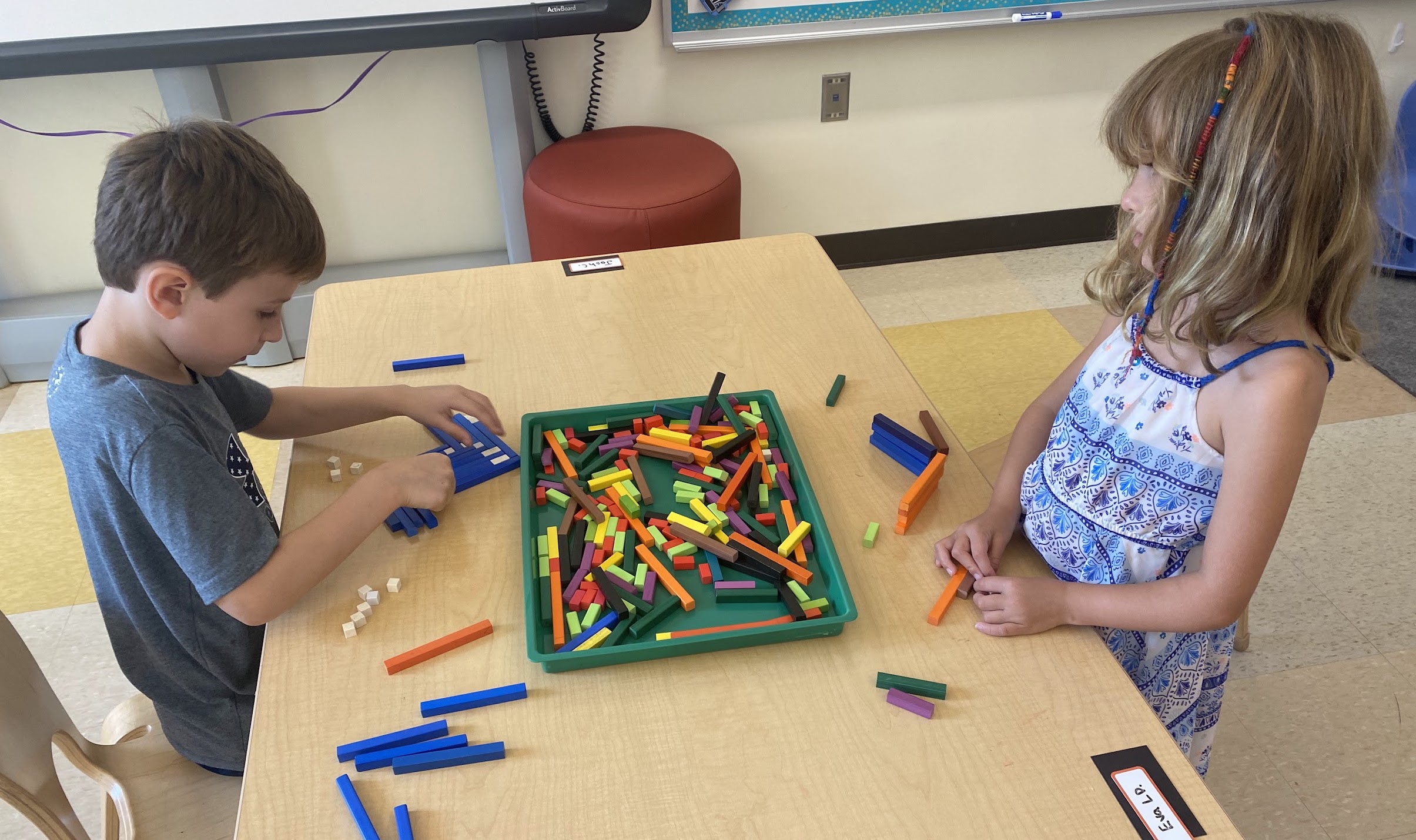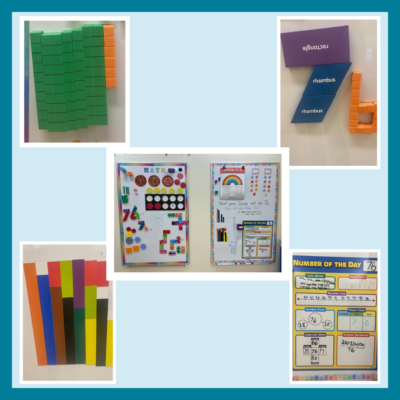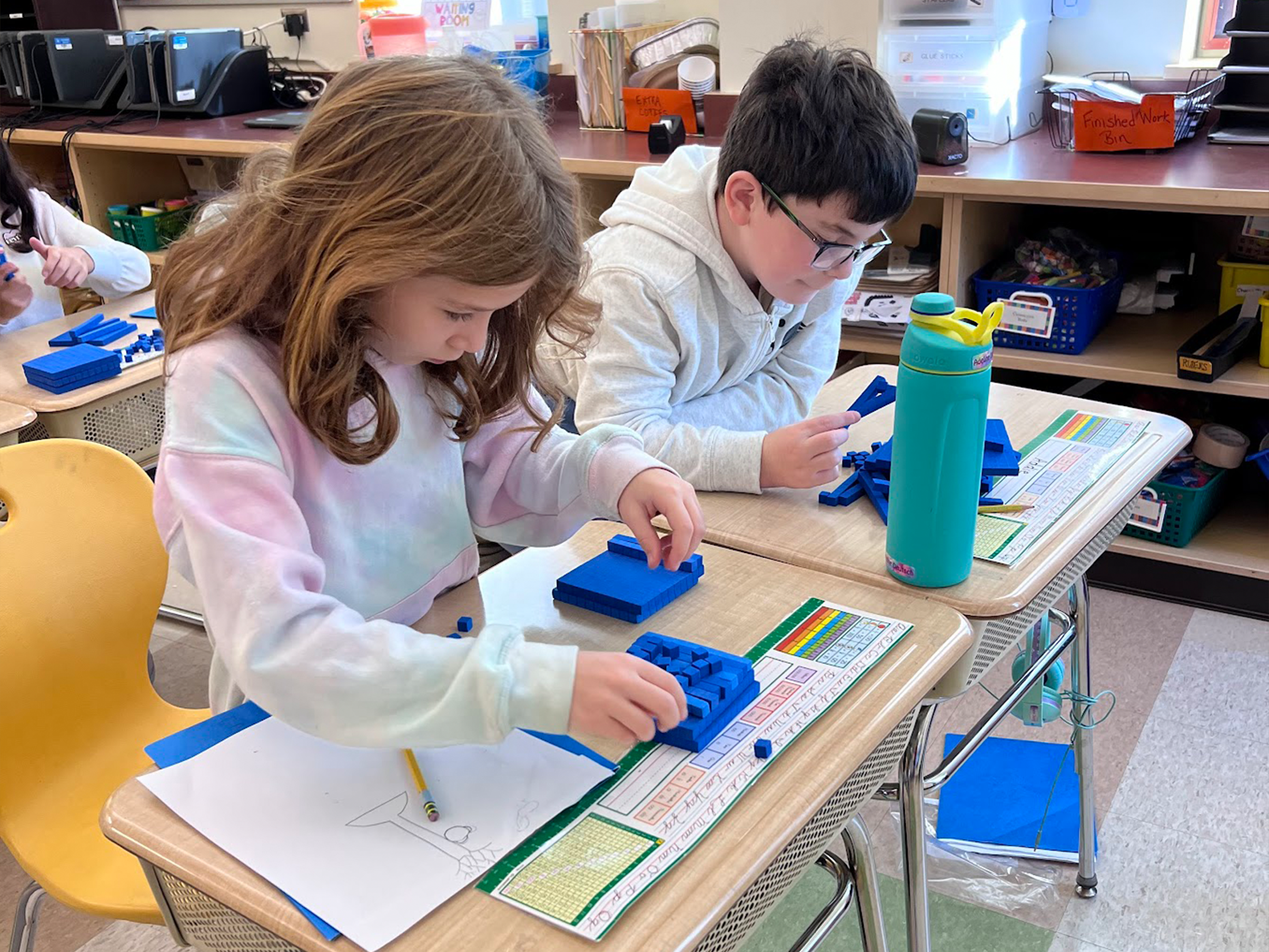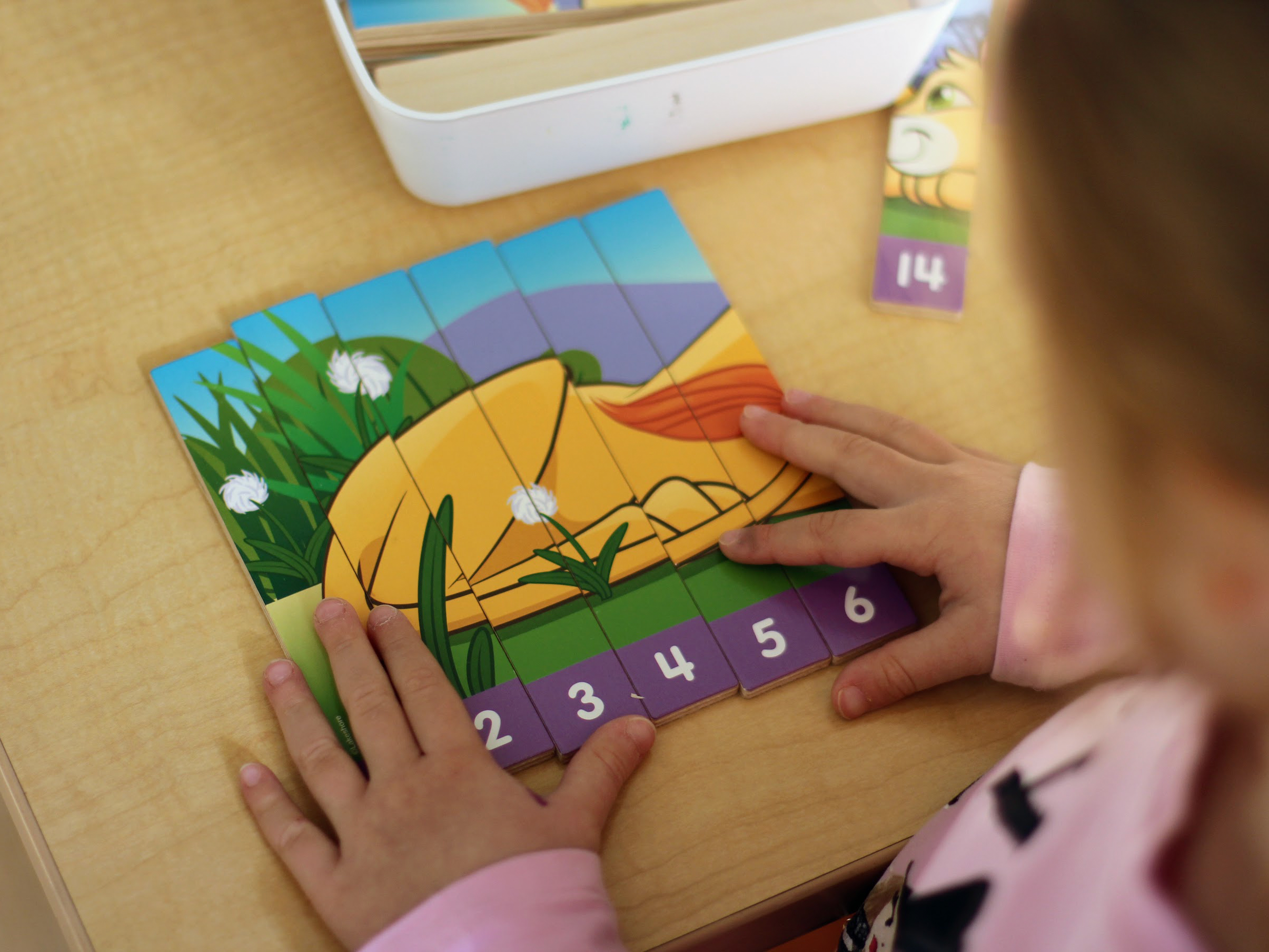From Lower School Math Specialist Fallon Katz

At Rashi, the goal of math education is to bring the vitality of math into the awareness of students so they can recognize it in the world around them. Math manipulatives—like Cuisenaire rods, Unifix cubes, fraction bars and circles—increase student engagement and understanding. Tactile and kinesthetic learning experiences improve information retention and enhance the development of problem-solving, critical thinking, and collaboration skills. The classroom experience becomes richer with discovery. Abstract concepts are more easily understood when students can quite literally “manipulate” the math through which they are working. Students will ask more questions, test more theories, and prove more concepts with the addition of math manipulatives, making mathematical achievement accessible to all.
 In the photo pictured to the left, Grade 1 students represent the value “76”—Israel’s age at her next birthday—in a variety of presentations: Base-10 Blocks, Cuisenaire Rods, the number line, in a number bond, by place value, tally marks, and more. The floor-to-ceiling magnetic whiteboards at the front of their classroom welcomed the students, providing an immediate opportunity to interact with math, just like they will in the real world. Even outside of their formal math classes, such as in discovery times or social justice lessons, teachers incorporate mathematical learning in age appropriate ways.
In the photo pictured to the left, Grade 1 students represent the value “76”—Israel’s age at her next birthday—in a variety of presentations: Base-10 Blocks, Cuisenaire Rods, the number line, in a number bond, by place value, tally marks, and more. The floor-to-ceiling magnetic whiteboards at the front of their classroom welcomed the students, providing an immediate opportunity to interact with math, just like they will in the real world. Even outside of their formal math classes, such as in discovery times or social justice lessons, teachers incorporate mathematical learning in age appropriate ways.
But can this method of learning be used outside of school? Of course it can! Household items can also be used as math manipulatives to support your child’s learning. For instance, younger children can use dried goods—cereal, pasta, beans—as counters, or to practice estimation or measurement. Dice can be used in a variety of ways, including fact fluency practice. Playing cards can be used to teach even and odd numbers. Beads can be used to create impromptu ten frames. You can even use buttons to generate bar graphs based on different attributes! The use of manipulatives provides an alternate pathway to success as children become increasingly confident and independent.



